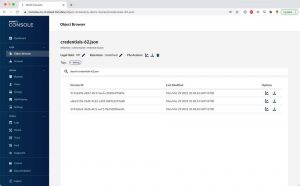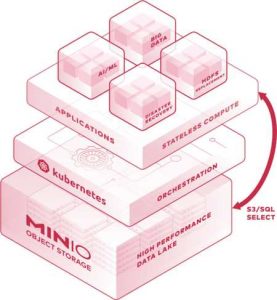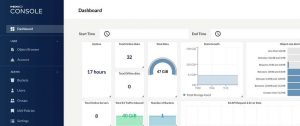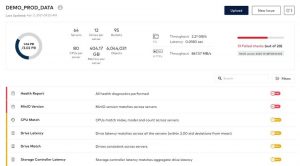MinIO Enables IT to Manage Kubernetes-Native Object Storage With Addition of Console, Operator and Sbnet Health
Updates bridge cloud-native world with enterprise management capabilities
This is a Press Release edited by StorageNewsletter.com on April 16, 2021 at 2:30 pmMinIO, Inc. announced the addition of Console, Operator and SUBNET Health to its suite of object storage software.
Clock to enlarge
These features simplify the deployment of multi-tenant object storage using Kubernetes. Critical components in any IT modernization effort, these additions ensure that the broadest audience can leverage MinIO.
The addition of these features extends MinIO’s enterprise reach to include key IT functions while providing additional interaction points for the company‘s developer audience.
MinIO Kubernetes Operator
Click to enlarge

The Operator extends the firm‘s Kubernetes position by encapsulating all critical DevOps tasks into software that can be easily consumed by enterprise IT. Through it, IT administrators can deploy and manage large object storage infrastructure independent of the underlying infrastructure – public, private and edge. It encapsulates the capabilities required for tenant creation, tenant expansion and tenant management. Because of the success of Operator, the firm has made it available on all major Kubernetes distributions including Red Hat OpenShift, vSphere 7.0U1, SUSE Rancher, HPE Ezmeral and stock upstream.
In addition, the firm is also making the Operator available on all major public cloud providers. These include Amazon’s EKS (Elastic Kubernetes Engine), Azure’s AKS (Azure Kubernetes Service), Google’s GKE (Google Kubernetes Engine) and Anthos.
MinIO Console
Click to enlarge
Building on top of the Operator Custom Resource Definition APIs, the MinIO Console provides a graphical interface to manage and monitor the clusters. Designed for the needs of IT administrators and auditors, it presents a simple interface to even the most advanced features of the company’s storage suite. With the Console, IT can provide public cloud-like, self-service interfaces to their application teams. Built to support at-scale deployments with minimal overhead, it enables administrators and users to provision multi-tenant object storage-as-a-service, visually inspect the health of the system, perform key audit tasks and integrate with other components with a handful of clicks.
SUBNET Health
Click to enlarge
Given the company‘s positon in the hybrid cloud, it must operate on a range of hardware, from the public cloud to the edge. SUBNET Health automates root cause analysis by performing multipoint inspection across drives, network, CPU, memory, OSs, containers and the firm’s software components. By turning supportability into a software service, the company is able to deliver tight SLAs across a large number of customers. SUBNET Health is designed to operate in both online and air gapped environments.
“Collectively, these features allow customers to rapidly adopt even the most advanced MinIO capabilities while providing a roadmap for increased automation as they scale their deployments and workloads,” said AB Periasamy, CEO and co-founder, MinIO. “SUBNET Health is a critical component of MinIO’s hybrid cloud strategy and provides customers with the confidence to run on any hardware, in any environment and on any cloud.“
These features are all licensed under GNU AGPL v3 and reflect the company‘s commitment to open source software. The firm, as the copyright holder, can provide exceptions to the obligations associated with the AGPL v3 through a commercial license.
Commercial license holders also gain access to the company’s Subscription Network (SUBNET). It includes 24/7/365 support, access to the ‘Panic Button’, SUBNET Health, architecture, performance and security reviews and other benefits. Priced on usable capacity, SUBNET replicates the public cloud experience in terms of transparency, elasticity and simplicity.
“MinIO’s end-to-end object storage infrastructure automation distinguishes them from other vendors in the space,” noted Robert Roizen, co-founder and CTO, Feedonomics. “At Feedonomics, our Kubernetes journey is well underway, and these new capabilities allow us to both accelerate that journey but also to broaden the teams that can participate in it. We operate in multiple environments, and SUBNET Health allows us to quickly identify problems, optimize performance and verify that our data is secure.“
Resources:
Console blog
SUBNET Health blog:
Kubernetes Operator blog
Product overview
















 Subscribe to our free daily newsletter
Subscribe to our free daily newsletter

